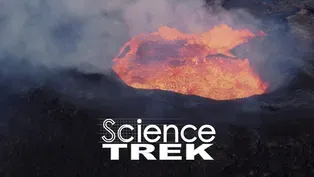
The Earth: What's a Biome?
Clip: Special | 1m 4sVideo has Closed Captions
In what kind of biome do you live?
Biomes are large natural areas that have their own characteristics. Scientists classify them by their climate, animal life, vegetation, and landscape. Learn more about biomes.
Science Trek is a local public television program presented by IdahoPTV
Major Funding by the Laura Moore Cunningham Foundation and the Idaho National Laboratory. Additional Funding by the Friends of Idaho Public Television and the Corporation for Public Broadcasting.

The Earth: What's a Biome?
Clip: Special | 1m 4sVideo has Closed Captions
Biomes are large natural areas that have their own characteristics. Scientists classify them by their climate, animal life, vegetation, and landscape. Learn more about biomes.
How to Watch Science Trek
Science Trek is available to stream on pbs.org and the free PBS App, available on iPhone, Apple TV, Android TV, Android smartphones, Amazon Fire TV, Amazon Fire Tablet, Roku, Samsung Smart TV, and Vizio.

Science Trek
Science Trek is a place where parents, kids, and educators can watch short, educational videos on a variety of science topics. Every Monday Science Trek releases a new video that introduces children to math, science, technology, engineering, and math (STEM) career potentials in a fun, informative way.[MUSIC] JOAN CARTAN-HANSEN, HOST: Scientists divide up the world into biomes.
Biomes are large, natural areas that have their own climate, landscape, vegetation, and types of animals.
There is the tropical rain forest biome.
This biome is hot and humid and has lots of wildlife.
Next is the temperate or deciduous forest biome.
The trees in this biome lose their leaves in the fall.
Then there is the desert biome.
These areas have very little rainfall.
Then there's the boreal forests.
These are conifer tree areas found mostly in the north.
The dry scrubland biomes have short bushes or wild shrubs.
And the grasslands biome is also known as savanna, steppe or prairie.
Then there are lakes and rivers biomes and mountain biomes.
There's tundra biomes that lie near the poles.
And finally, there's the polar biome.
As you would expect, it's cold and dry.
But some animals and plants can still survive here.
Biomes help us understand how plants and animals live in relationship with their environment.
For more information about the Earth, check out the Science Trek website.
You'll find it at Science Trek.org
Providing Support for PBS.org
Learn Moreabout PBS online sponsorshipScience Trek is a local public television program presented by IdahoPTV
Major Funding by the Laura Moore Cunningham Foundation and the Idaho National Laboratory. Additional Funding by the Friends of Idaho Public Television and the Corporation for Public Broadcasting.












